From BIG to David Chipperfield, Frank Gehry to Snøhetta: a world tour of the best buildings set to open in 2026
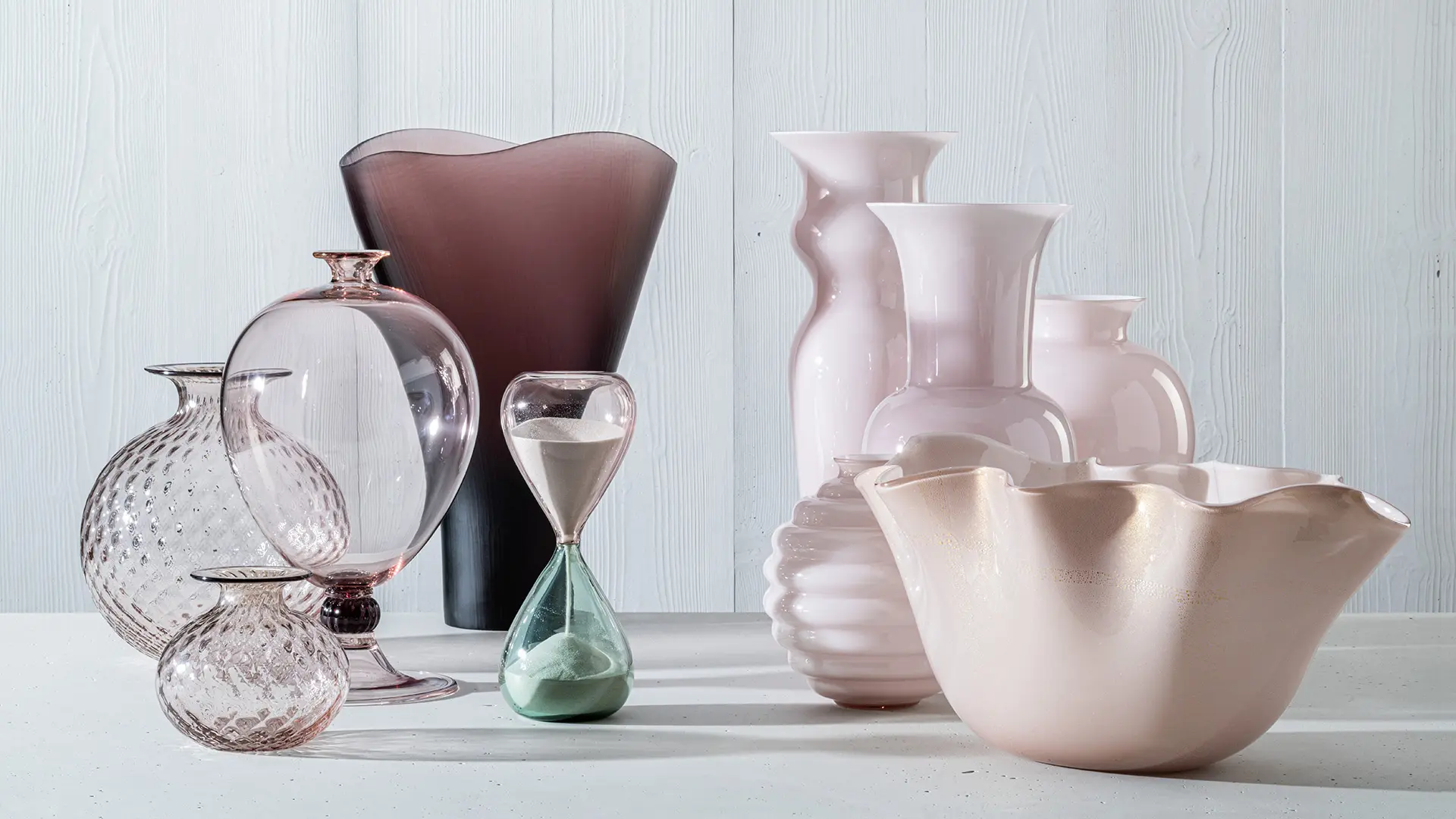
The historic Murano foundry asserts itself yet again as a protagonist of glass art and contemporary design. A limited edition and three new colours celebrate a century of fascinating experiments.
James Bond hunting down the Venini Museum. Not a fantasy but a scene from the famous film Moonraker, in which Agent 007, played by the mythical Roger Moore, is hot on the heels of his enemy, the owner of the building. The sequence ends with the unforgettable clash during which myriad amounts of glass (fake, obviously) are shattered. Featured on the big screen and represented in top museums around the world – from the Metropolitan Museum and MoMA in New York to the Cartier Foundation and the Pompidou Centre in Paris, the Victoria and Albert Museum in London, the Musée des Beaux Arts in Montreal, the Eretz Museum in Tel Aviv, and the Watari Museum of Contemporary Art in Tokyo, amongst others – the Venini collections continue to grow.
The famous Murano-based company is celebrating its centenary with one hundred pieces of the most iconic object in its history and the launch of three original colours, in an annus mirabilis that marks the 1,600th anniversary of the founding of Venice. Venini and the city on the lagoon are intrinsically bound together in a unique relationship built on art and creativity. Silvia Damiani, President of Venini and Vice-President of the Damiani Group of which the brand has recently become a member, had this to say: “Throughout these hundred years of history and passion, Venini has preserved and interpreted a unique artistic heritage with its roots in the Venetian culture of 1,200, producing unmistakable pieces that blend deep-rooted traditional skills with the fascination of contemporary looks.”
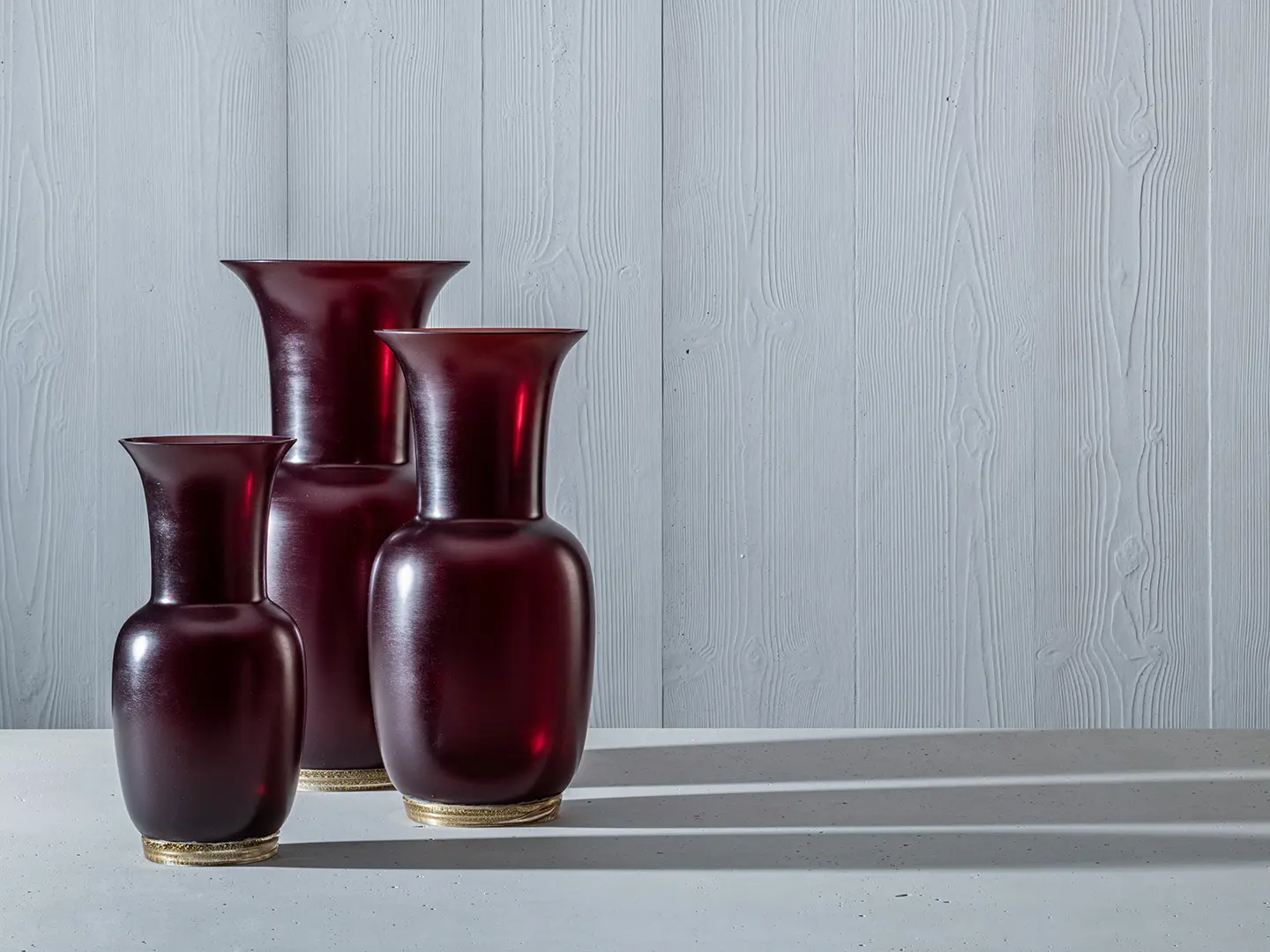
Satin
The first stone of the foundry was laid in 1921 by Paolo Venini, a Milanese lawyer, and Giacomo Cappellin, a Venetian antiquarian. Since then, an unbroken sequence of silent gestures and precise movements has passed down from one generation of artisans to the next - skills and abilities that turn an idea or a design into works of art, sought-after by collectors, design fans and lovers of beautiful things.
The foundry has produced the most amazing pieces of blown and hand-made glass, which are a perfect balance of technique and traditional and contemporary art and design craftsmanship. ACQUA [water], the element of the Venetian lagoon, also serves as Venini’s cultural manifesto. It is an acronym for Art, Colour, Quality, Uniqueness, and Craftsmanship, words that have become the core values on which the company’s creative approach to its masterpieces rests.
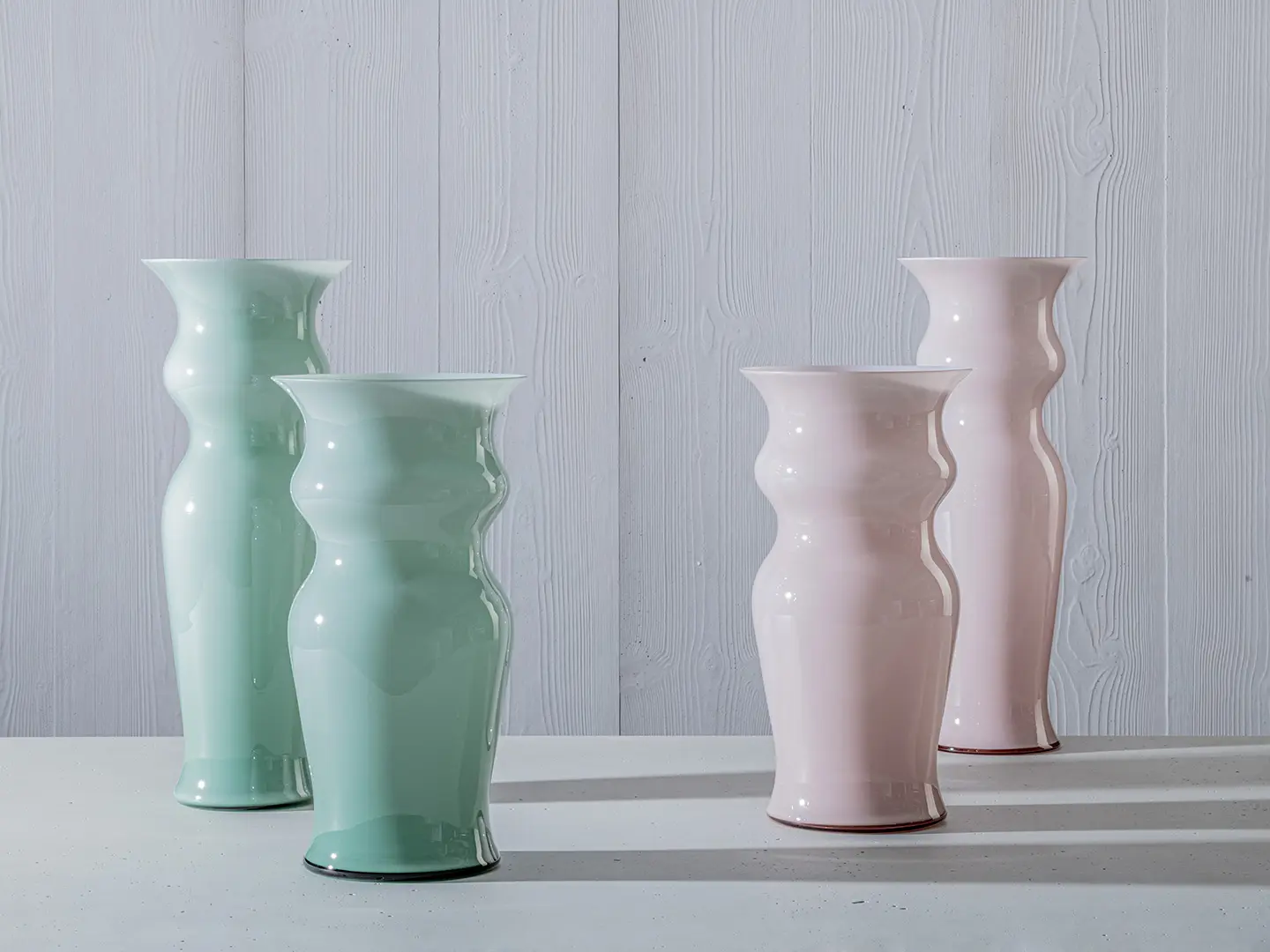
Odalische
The brand’s plentiful collection can also be identified with a series of leading names in the history of design past and present, including Carlo Scarpa, Gio Ponti, Fulvio Bianconi, Tapio Wirkkala, Laura De Santillana, Tobia Scarpa, Gae Aulenti, Ettore Sottsass, Mimmo Rotella, Alessandro Mendini and contemporary designers such as Emmanuel Babled, Doriana e Massimiliano Fuksas, Cini Boeri, Rodolfo Dordoni, Giorgio Vigna, Tadao Ando, Fernando and Humberto Campana, Flo Perkins, Fabio Novembre, Michela Cattai, Mario Bellini, Studio Job, Barber & Osgerby, Hani Rashid and Lise Anne Couture, Ron Arad and Peter Marino.
Past, present and future continually intersect in the work of a company that has revolutionised the art of glassmaking. This is true of the Veronese vase, the most iconic object in its collections, reissued in a limited edition of 100 to mark this major anniversary, and in a new shade of powder pink with oxblood details, one of the company’s historic colours, recently rediscovered during experimentation and research into combinations of minerals and pigments. It’s also a homage to the identity and history of Venice, crucible of the foundry’s success. It’s a colour reminiscent of the reds and browns in paintings made during the Renaissance, that sumptuous era during which the Serenissima controlled the routes East. The piece is, in fact, actually inspired by a work by Veronese, and was blown for the first time in 1921 by Vittorio Zecchin, the company’s painter and artistic director until 1925, who was fascinated by a detail in the Annunciation – a transparent, amphora-shaped vessel containing a sprig of bramble bearing berries, shot through with a ray of light.
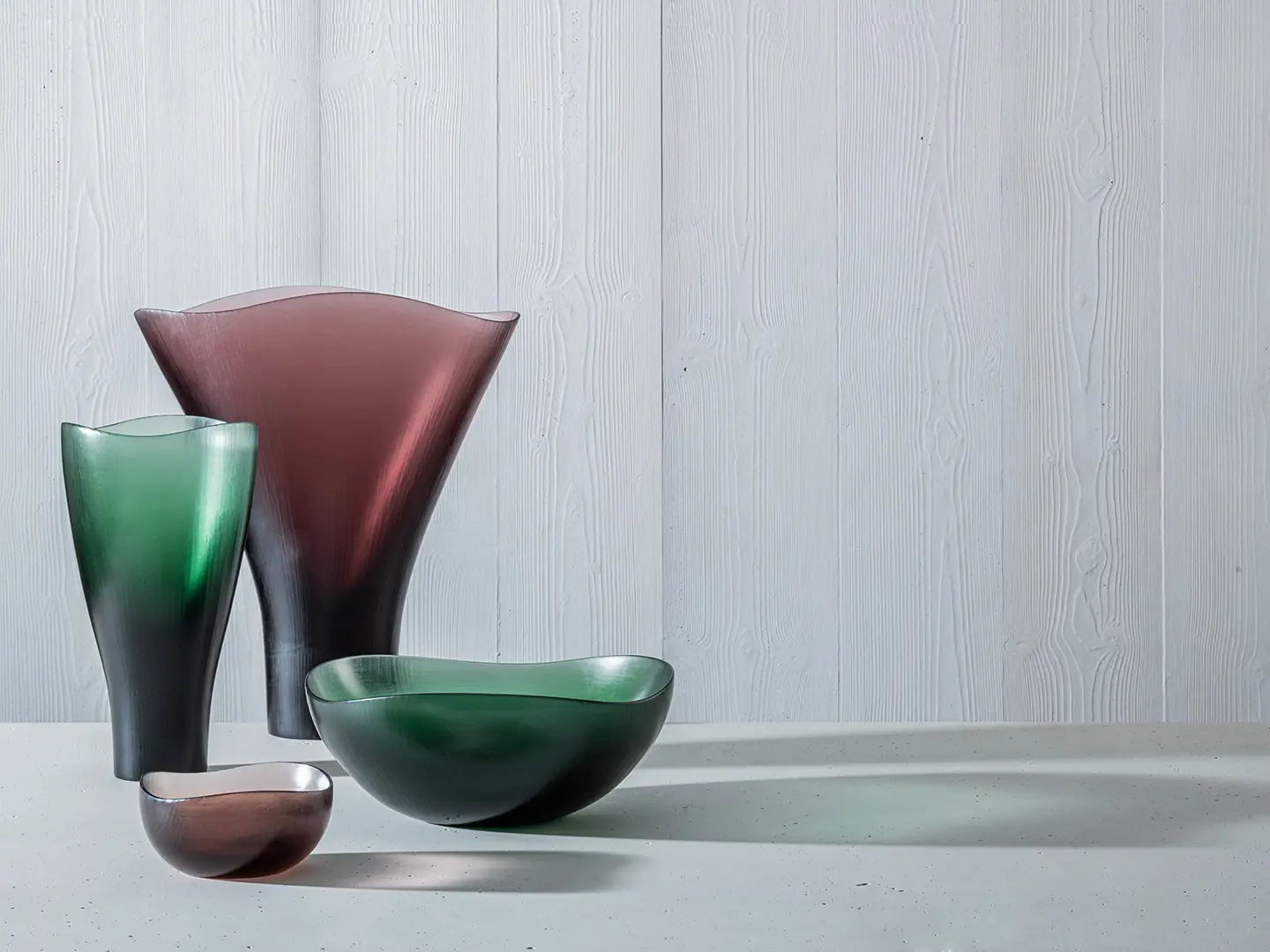
Battuti
Alongside powder pink and oxblood, the third colour chosen to celebrate the anniversary is Rio green, an explicit reference to the colours of the lagoon, characterised by equilibrium, delicacy and freshness. The three new shades, in both transparent and opalescent versions, have been used on several iconic products, such as the Fazzoletto, Balloton, Opalino, Labuan and Decò, as well as the Odalische and the Battuti vases, informing a sophisticated and contemporary collection honouring this major anniversary. Colour has always played a huge part in Venini’s creative process. The foundry boasts an exclusive palette of 125 shades, unrivalled in Murano glassmaking, their formulas handed down over the centuries or reworked to produce new combinations, such as those perfected to celebrate the foundry’s centenary.
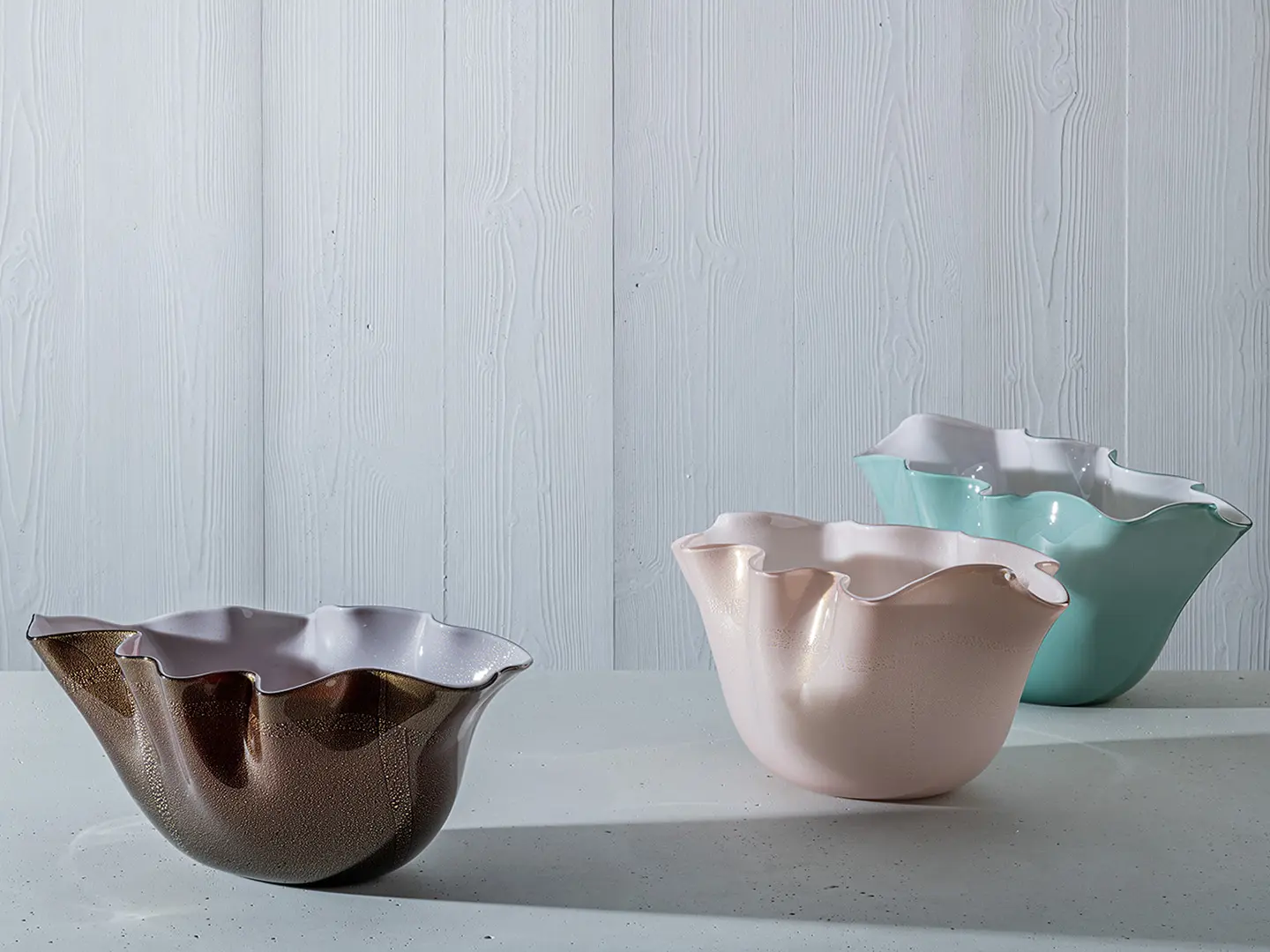
Fazzoletto, Venere
The Venini Museum, opened in 2009 at the Murano glassworks, also bears witness to these 100 years of skill and artistry. It contains a priceless heritage of more than 45,000 artists’ drawings, over 10,000 vintage photos of architectural installations, past exhibitions, events and people and, lastly, 5,000 objects, including a large number of prototypes that never went into production, along with extremely rare artists’ proofs, often lent along with the designs to leading international museums for exhibitions on the history of the company and Murano glass. The museum doesn’t merely document a historical continuity, it also illustrates a complete lifecycle, marked by unique moments, situations and creations.
Venini, the faithful custodian of a centuries-old skill.


 Stories
Stories








